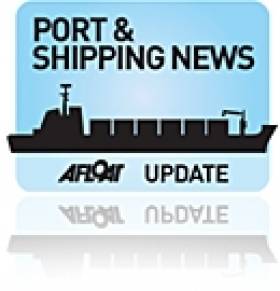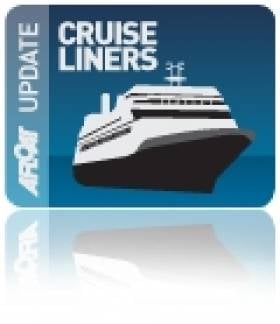Displaying items by tag: Ports & Shipping
Arklow Shipping Expands Fleet into Handysize Bulker Market
#PORTS & SHIPPING – Arklow Shipping is further expanding its bulker fleet and moving into the market for larger vessels with an order for three ships in South Korea, according to Tradewinds.
The company which is headquartered in the Co. Wicklow port has booked two 35,000-dwt handysize-bulkers and a general cargoship at Daesun Shipbuilding. TradeWinds sources say Arklow is paying a premium for the ships against more competitive pricing from China.
Brokers price the Daesun bulkers at around $25.5m, which compares to similar deals in China at around $22m. As for the general cargoship, she will be delivered in the first half of 2013 and the bulkers in the second half of the year. Arklow previously signed up for a series of 14,000-dwt multipurpose (MPP) vessels at Mokpo, which later went into administration.
The orders were then passed on to Sekwang Shipbuilding only for it also to fall into financial difficulties. Daesun has had its problems too and was delisted from the Seoul Stock Exchange in April as it did not meet the bourse's financial requirements.
The latest order appears to have taken Arklow's owned fleet into the larger-handysize segment. So far it has focussed mainly on bulkers, general-cargo and MPP ships up to 14,000 dwt. It has a fleet of 55 ships including 12 newbuildings, most of which are registered in the Republic of Ireland. Arklow declines to comment on the Daesun order.
Drogheda Port to Become New Cruiseship Destination
#CRUISE LINERS- In a first for Drogheda Port, the cruiseship, Clipper Adventurer (1975/4,367grt) is to call next May, and will represent a new business to the port as part of its circumnavigation of the island of Ireland, writes Jehan Ashmore.
The 101m long vessel will bring 236 American and Canadian visitors and a 65 crew, on a cruise organised by Adventure Canada, in association with Royal Canadian Geographical Society.
During the 10-day circumnavigation, the vessel will make calls to the Co. Louth port with passengers touring the Boyne Valley, The Skelligs, Aran Islands, the Gardens on Garnish at Glengariff and Tory Island. They will take in the history, archaeology, bird and marine life, culture, and Irish music in addition to a lecture programme from an on board team.
"With its downtown location, Drogheda Port is perfect for us," says Matthew Swan, president of Adventure Canada.
Last year, Swan visited Drogheda to conduct research for the cruise trip around Ireland. "I heard about your Graffiti and Samba Festivals before coming to town. It seemed like my kind of place, I'm definitely coming back for the Samba event."
Nessa Lally of Drogheda Port commented on the launch of the port as a new cruise destination: "Drogheda Port Company is pleased to announce the inaugural visit of the Clipper Adventurer to our port. This is the beginning of something special for Drogheda and the Boyne Valley.
The area has tremendous potential as a regular cruise destination with world class and potential world class attractions such as Newgrange, Slane Castle, Beaulieu House, the Battle of the Boyne site, the Hill of Tara and medieval Drogheda town itself, to mention just a few.
We will very much welcome the Clipper Adventurer and its passengers to our port and town and intend to give them a memorable visit to our locality. The port company has also commenced a dialogue with a number of interested parties to build and brand a full local itinerary for attracting and growing cruise business and tourism."
In the same month of the inaugural cruise, Drogheda will host a second cruise also by Clipper Adventurer, with Danish passengers organized through Copenhagen-based tour operator, Albatros Travel. They will undertake a 10-day Irish and Scottish itinerary that finishes in Bergen, Norway.
Clipper Adventurer is an exploration vessel which otherwise is often found cruising in polar waters, either Antarctica or the Arctic from Spitsbergen through Iceland, Greenland and Canada's Northwest Passage.
Over the last decade she has called to several Irish ports to include a once-off call to Arklow, where the Serbian-built vessel anchored offshore.
Port & Shipping Volumes Continue Slowdown in 3rd Quarter
#PORTS & SHIPPING- The volume of shipping and port traffic through the Republic of Ireland continued to decline during the third quarter of 2011, according to the latest analysis of traffic figures released by the Irish Maritime Development Office (IMDO).
Results from third quarter data indicate that only 1 of the 5 principal freight segments had any growth over the third quarter, while all other segments declined compared to the same period last year as outlined below in the key third quarter data:-
• Lift-on/Lift-off (lo/lo) trades were down 5%
• Roll-on/Roll-off export traffic was down by 2%
• Dry bulk volumes increased by 2%
• Break bulk volumes were down by 3%
• The Tanker/Liquid bulk market was down 7%.
For a more in-depth analysis of each freight-transport mode issued by the IMDO and accompanied by graphic charts click HERE. In addition to compare the 3rd quarter figures with the previous 2nd quater for this year click HERE.

























